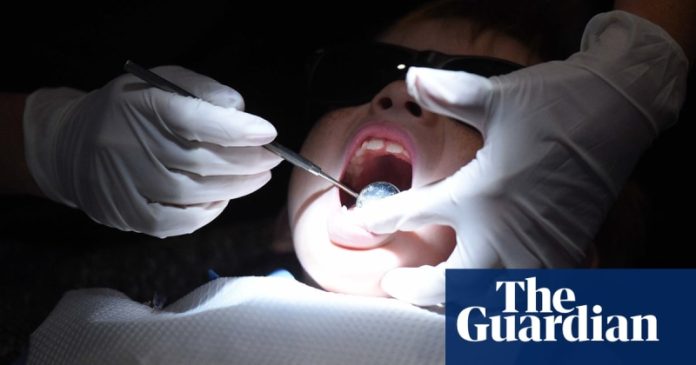Natasha May
Australia ranks well when it comes to total dental care expenditure. But a closer look at the numbers reveals that trips to the dentist are a luxury many people can’t afford
Australia spent $11.1bn on dental care in 2021–2022, ranking it sixth out of 31 OECD countries for per capita expenditure.
At first glance, that statistic seems pretty good. Dig deeper? Not so much.
That’s because Australia performs very poorly on public funding of dental care, sliding to 23rd in the OECD, according to the Australian Dental Journal.
Analysis in the journal, based on 2020 OECD data, found that about 60% of the $11.1bn comes from individual out-of-pocket expenses ($6.67bn). Health insurance accounts for $2.16bn, while the federal government chips in $1.3bn and state/territory governments about $1bn.
Experts say that because many people can’t afford a visit to the dentist, untreated dental decay and oral health problems are on the rise.
So, which countries are doing better and how do they do it?
Poland’s government pays the highest relative contribution for dental care of all OECD countries, with a public scheme that covers 95% of the population, according to the World Health Organization. Routine and preventive oral health care, basic restorative procedures to treat existing dental decay, and more advanced curative oral health care (including X-rays, complex fillings, root canal treatment) are all available in the public health sector. Only rehabilitation oral health care (crowns and bridges, dentures, orthodontics, dental implants) are not part of health benefit packages.
But even those procedures in Poland’s private system are much cheaper than in Australia.
Jan* moved from Poland to Australia in the late 1980s. In 2012 he went back to Poland for a very specific purpose: to fix his teeth. He says he had seven visits to the dentist to perform two root canals, three bridges and 12 porcelains.
In Australia he says the cost would have been between $20,000-$25,000, but in Poland he got the care he needed as a private patient for the equivalent of $2,750 (7,000 Polish złotys).
Japan pays the second-highest relative contribution for dental care in the OECD. Dental is included in the country’s universal health insurance system, covering most restorative, prosthetic and oral surgery treatment. Except for children, older adults, and people on lower incomes, individuals pay 30% of their total dental treatment costs in Japan. This means everyone can receive dental treatment at a relatively low cost, with the same fees applying throughout the country. Japan’s expenditure on dental healthcare is US$28.7bn.
The French government comes in third. Fees are regulated between the elected dental trade unions, the National Health Insurance and the Complementary health insurance scheme. The National Health Insurance pays up to 60% of the regulated fee, and if a person has private health insurance they pay the balance. Most treatment for children under 18 is free but braces are not covered. Since 2020, the “100% health” (“100% sante”) reform made dental prostheses available with no out-of-pocket costs. Most dentists work within the public health system, and treatments are reimbursed in the same way as other medical treatments.
Emilie* moved to Australia in 2015 and, like Anita, “used to wait to go back home to go to the dentist”. She could get the entire 30 euro cost of having her teeth cleaned reimbursed but the appointment only took 10 minutes. Other kinds of dental services attract out-of-pocket fees, but patients often get money back from their Complementary health insurance.
Since she started to visit a dentist in Sydney’s Potts Point, Emilie says she has found the charges higher than those in France but says the quality is “top notch”. The Sydney dentist found some glue on her teeth from braces she wore 15 years ago: “I’ve been to the dentist since I had braces – multiple times – which means that none of my dentists in France took the time to properly clean and remove the glue from them.”
“I’m really happy with my dentist [in Australia], even if I have to pay him a fortune,” she says. She is also grateful to be able to access care, compared with her family back in rural France who struggle to get appointments because of a national shortage of dentists.
No 4 on the list is Germany, where dentistry is semi-privatised. Health insurance in Germany is compulsory, through statutory health insurance or private health insurance. Simple, medically-necessary dental treatments are fully covered, but more complicated or cosmetic dentistry is partly covered, and in some cases, patients foot the entire bill. The statutory health insurance (covering 90% of the population) usually covers six-monthly dental check-ups, teeth cleaning once a year and basic fillings.
* Interviewees wanted only their first names published.

